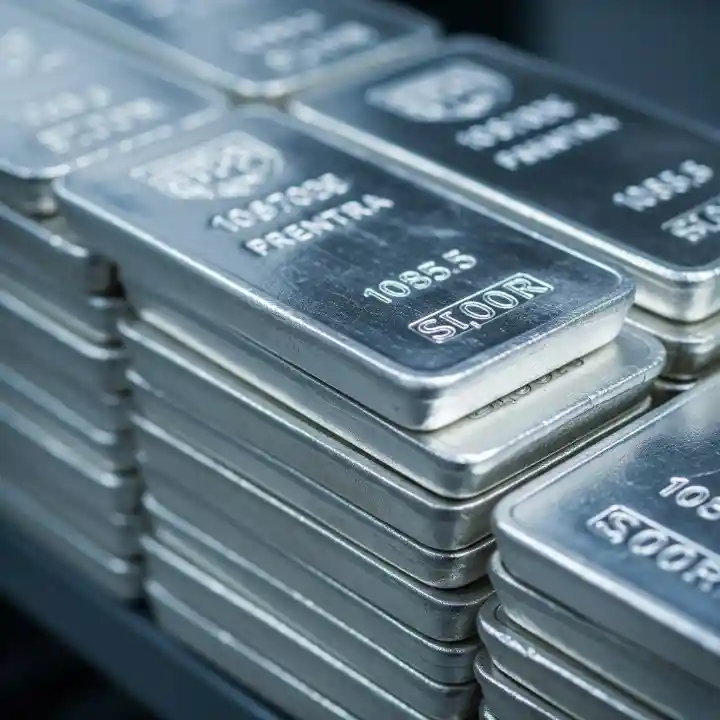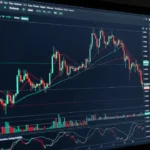A few months ago, chatting with a colleague over lunch, I shared how a small silver coin I’d bought years ago had doubled in value. He laughed, saying he’d stuck to stocks, but was now curious about silver’s recent 30% jump in 2025, per TradingEconomics. For a business and finance audience, silver’s $1.2 trillion market, driven by industrial demand and safe-haven appeal, is hard to ignore. Let’s break it down, like explaining a hot investment to a friend, so everyone; investors, businesses, or curious readers; can grasp silver’s role and how to approach it.
Why Silver Matters in 2025?
Think of silver as a Swiss Army knife: it’s both a precious metal like gold and a key industrial material. Priced at $38.16 per ounce on July 18, 2025, silver’s up 30.59% year-over-year, outpacing gold’s 28% rise, per TradingEconomics. Its demand comes from solar panels (16% of global use), electric vehicles (2.9%), and electronics, per StrategicMetalsInvest. The Silver Institute projects a 149-million-ounce supply deficit in 2025, the fifth year running, fueled by 700 million ounces in industrial use.
Why does this matter? For businesses, silver’s role in green tech means supply chain stability is key. Investors see silver’s volatility, 7.5% standard deviation versus gold’s 12%, per BankBazaar, as a high-risk, high-reward bet. In India, silver’s 11% returns in 2024 beat gold’s, drawing retail investors, per Reuters. X posts, like WealthEnrich’s, highlight solar’s 33% demand share by 2030, boosting sentiment. Silver’s dual role makes it a unique player in today’s economy.
Strategies for Adding Silver to Your Portfolio
Imagine silver as a spicy stock in your investment mix, you want just enough to add flavor without burning your wallet. Here’s a practical game plan for investors, businesses, or advisors:
-
Track market trends: Use platforms like bullionvault.com for real-time silver prices, as they hit $38.50 on July 21, per GoldSilver.
-
Diversify with ETFs: Invest in silver ETFs like SLV, up 20% in 2025, per Yahoo Finance, to avoid physical storage costs.
-
Buy physical silver: Purchase certified coins or bars via dealers like TRADIUM, ensuring purity for resale, per StrategicMetalsInvest.
-
Monitor central bank moves: Watch for purchases, like Russia’s $535 million silver plan, per Kitco, which could lift prices.
-
Hedge with futures: Trade silver futures on MCX (minimum 100 grams), but only if experienced.
These steps are like checking your map before a road trip, plan to avoid detours. They help balance silver’s potential with its risks.
Challenges of Investing in Silver
Let’s simplify the hurdles, like explaining a market dip to a nervous client. Silver’s volatility, twice gold’s, makes it a wild ride—prices spiked to $36 in June 2025 but dropped to $32 by December, per GoldSilver. Supply deficits, down 19% to 149 million ounces in 2025, per SilverInstitute, keep prices high but unpredictable. Geopolitical tensions, like U.S.-China trade talks or Middle East conflicts, drive safe-haven buying but can reverse fast, per Times of India. India’s high local prices, at ₹115,900 per kg, cut jewelry demand by 6%, per SilverInstitute.
Common mistakes include chasing rallies or ignoring costs. Here’s how to avoid them:
-
Avoid overbuying: Limit silver to 5–10% of your portfolio, per Morgan Stanley, to manage volatility.
-
Check fees: ETFs like SLV charge 0.5% annually, per Yahoo Finance; compare with physical silver’s 20% UK VAT, per BullionVault.
-
Time entries: Buy during dips, like April’s $29.57 low, using investing.com charts, to avoid peak prices.
-
Verify authenticity: Use certified dealers like JM Bullion to avoid fakes, ensuring resale value, per StrategicMetalsInvest.
These fixes are like double-checking a contract, small steps prevent big losses.
Silver’s Industrial and Investment Appeal
Picture a solar farm gleaming with panels, each relying on silver’s conductivity. Industrial demand, forecast to hit 700 million ounces in 2025, per SilverInstitute, drives silver’s growth, especially in photovoltaics and EVs. India’s push for renewables, per Economic Times, boosts local demand, with silver prices at ₹115,900 per kg on July 18. Meanwhile, central banks like Russia’s, eyeing $535 million in silver purchases, signal confidence, per Kitco. X posts, like graddhybpc’s, predict a $60–$70 target if silver breaks $39, reflecting bullish sentiment.
Businesses can secure supply via contracts with firms like Hindustan Zinc, India’s top silver producer, per MoneyControl. Investors might explore mining stocks like First Majestic Silver, up 10% in 2025, per InvestingNews. Retail buyers can use platforms like goodreturns.in to track prices and buy coins for liquidity. Silver’s dual role keeps it in demand, but its volatility requires caution.
The Bigger Picture: Silver vs. Gold and Beyond
Zoom out, like explaining markets to a newbie. Silver’s gold-to-silver ratio, at 88:1 in March 2025, per IG, suggests it’s undervalued compared to gold’s $3,000 per ounce. Lower interest rates, expected in 2025, per FXEmpire, reduce the cost of holding silver, boosting appeal. Geopolitical risks, like Middle East tensions, drive safe-haven buying, per InvestingNews. Yet, a stronger dollar or China’s economic slowdown could cap gains, per SilverInstitute.
Businesses can lock in prices via futures on cmegroup.com to manage costs. Investors might consider ETFs like SIL, up 15% in 2025, per Yahoo Finance, for exposure without storage hassles. For retail, silver coins offer liquidity, per BankBazaar. Silver’s 30% rally in 2025, per TradingEconomics, shows its potential, but its volatility demands a clear strategy.
Conclusion: Navigating Silver’s Bright Future
Silver’s 30% surge in 2025, driven by industrial demand and safe-haven appeal, makes it a compelling addition to the $1.2 trillion precious metals market. By diversifying with ETFs, timing purchases, and verifying authenticity, stakeholders can harness its potential while managing risks.
What’s your take on silver’s role in your portfolio?
Share your thoughts in the comments or consult a financial advisor to refine your strategy.





